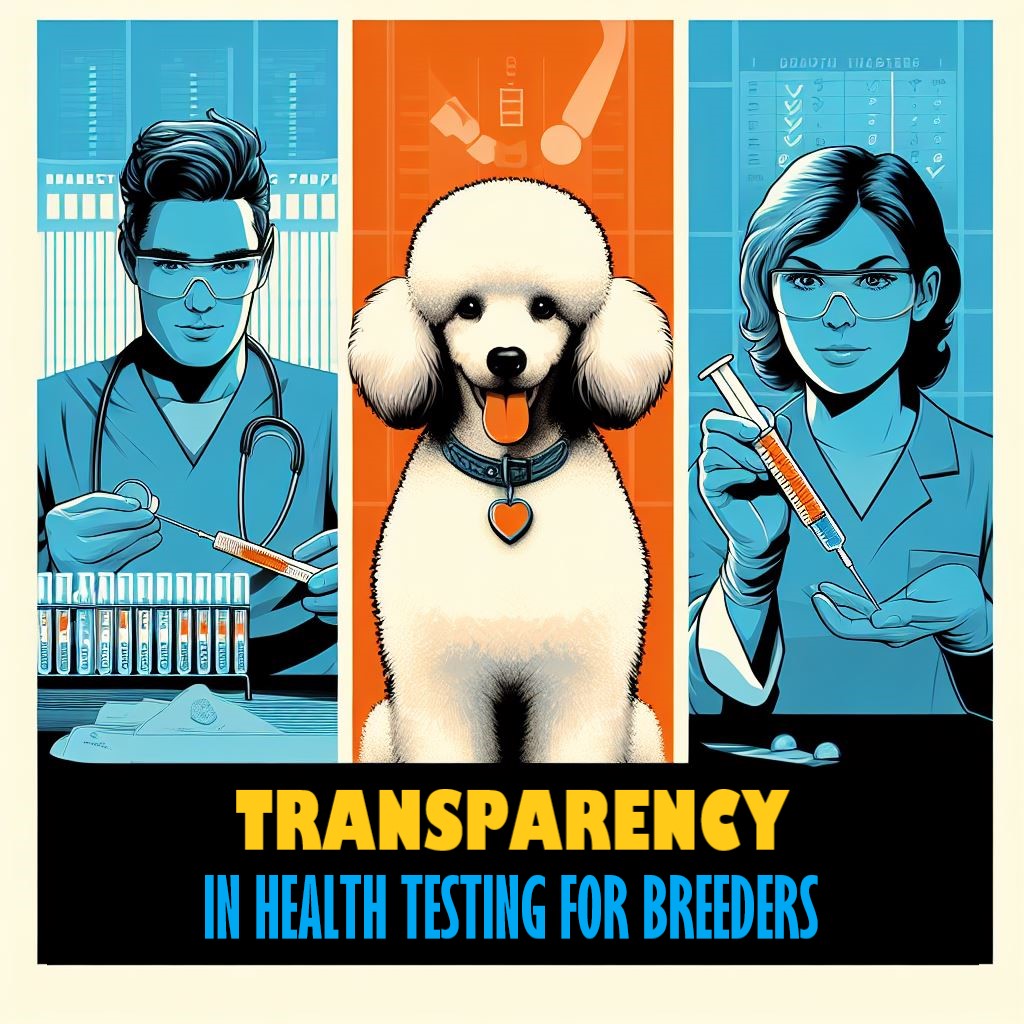Health Testing Transparency

Embracing Breeder Transparency: A Poodle Breeder’s Perspective
In today’s breeding landscape, transparency has become a buzzword, especially within the poodle community. Some breeders are increasingly vocal about their commitment to openness, often showcasing their virtues on social media platforms. Upon surveying this trend, I found a quote from Majestic Manor Goldens that resonates, “A reputable breeder is transparent about the health of their dogs and should be willing to discuss in detail the measures they take to ensure the health of their puppies. This includes sharing results of the aforementioned health tests on the breeding dogs, as well as any additional actions they take to minimize health risks in their breeding program. Honest communication between you and the breeder is essential to build trust and ensure that you feel confident in the health and history of the puppy you are bringing home.” These statements underscore the importance of transparency in creating a culture of mutual trust between breeders and buyers.
As a dedicated poodle breeder, I’ve always prioritized transparency in my practices. While I hadn’t felt the need to vocalize it extensively before, recent discussions have prompted me to reflect on the significance of transparency in our community. All of my dogs’ records are readily available on the Orthopedic Foundation for Animals (OFA) website, accessible to anyone wishing to verify my breeding stock’s health and genetic backgrounds.
But my commitment to transparency goes beyond mere compliance. While OFA CHIC certification is a standard requirement, I strive to exceed expectations by conducting additional health tests beyond the minimum recommendations. For example, I perform every genetic health test available and I repeat thyroid and cardiac evaluations for my breeding-age dogs, even though it’s not mandated. This proactive approach ensures that I’m breeding from the healthiest individuals possible, contributing to the overall well-being of the breed.
Transparency isn’t just about providing access to records; it’s about fostering trust and accountability within the breeding community and among prospective puppy owners. This is why I have written many blog posts and articles to educate buyers. By openly sharing information about health testing, pedigrees, and breeding practices, we empower buyers to make informed decisions and hold breeders accountable for their actions.
On my website, visitors can easily navigate to the OFA section to view comprehensive health clearances for each of my dogs (of breeding age). I believe that transparency shouldn’t be a privilege reserved for a select few; it should be the standard practice embraced by all responsible breeders.
At SPFL we strive to provide our clients with the healthiest dogs possible. However, just like humans and other living creatures, dogs can sometimes unexpectedly develop health issues that shock and sadden us. Nature, along with the unpredictable intersection of genetic anomalies, can give rise to both rare and common health issues.
Breeding healthy dogs with exceptional personalities is both an art and a science. We meticulously monitor breeding lines and carefully pair dogs to produce offspring that are not only physically robust but also possess wonderful temperaments. Should we encounter a healthy dog that unexpectedly produces offspring with any concerns, we would immediately halt that breeding line and share our concerns with our clients who may be affected.
Moreover, transparency isn’t static; it’s an ongoing commitment that requires continual reassessment and improvement. As advancements in veterinary science (recent examples include new tests for PRA-rcd4 and day blindness) and breeding practices emerge, breeders need to adapt and evolve, ensuring that they’re providing the highest standard of care for their dogs and producing healthy, well-balanced puppies.
In conclusion, I stand in solidarity with fellow breeders who champion transparency as a cornerstone of ethical breeding. By openly sharing information and upholding accountability, we can collectively work towards a future where the well-being of our beloved poodles takes precedence above all else. Transparency isn’t just a trend—it’s a fundamental principle that guides our journey towards bettering the breed and fostering trust within our community.


